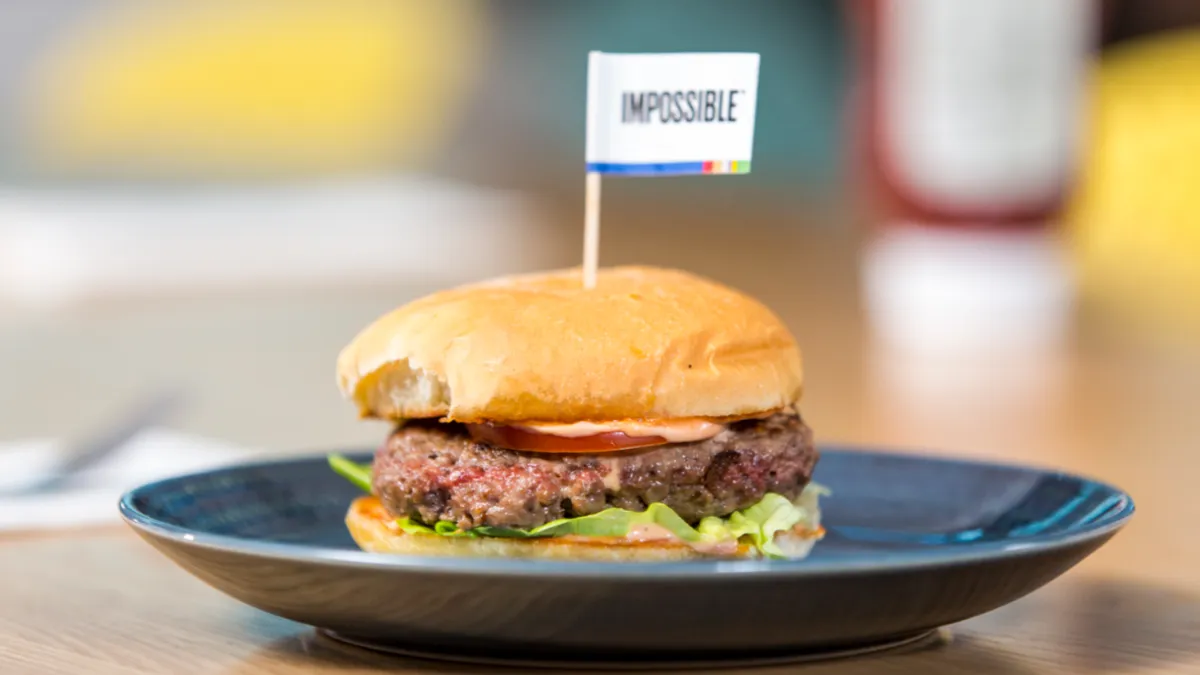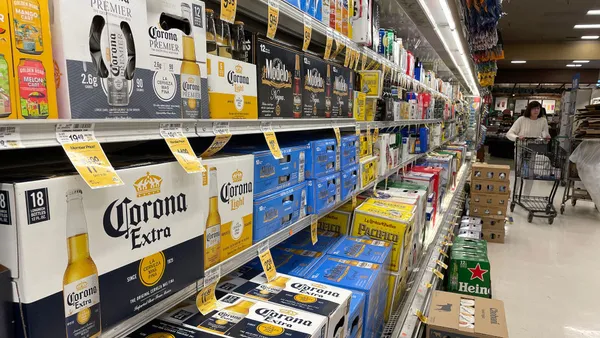Dive Brief:
- Impossible Foods announced a new partnership with global retail food supplier OSI Group to expand the production and distribution of its flagship Impossible Burger.
- Impossible Burgers will be sold in grocery stores starting in September, the company told CNBC, after receiving the Food and Drug Administration's generally recognized as safe status for soy leghemoglobin, the colorant that makes the burgers "bloody."
- The co-packing relationship with OSI was forged amid unprecedented demand for the Impossible Burger, for which there have recently been shortages. The Impossible Burger is currently on menus in approximately 10,000 restaurants on two continents.
Dive Insight:
Nothing is impossible, especially not the global expansion of Impossible Foods. The future of the plant-based burger creator is bright. Since the product was rolled out in 2016, the company has experienced explosive growth, which increased following the updated recipe of Impossible Burger 2.0. Faced with insatiable demand, however, the company apologized earlier this year to restaurants for a shortage that resulted from "demand greatly outstripping supply."
In efforts to keep customers happy, retailers opted to substitute other veggie burgers for the Impossible Burger. Anecdotal evidence suggests eaters don't see the burger as interchangeable, not even with that from competitor Beyond Meat.
Impossible Foods would not want to squander this competitive advantage. And it hasn't. Since last May, the Impossible Burger has expanded from 7,000 locations to over 10,000 — including several nationwide chains, including Burger King, where it will be available at every location starting next week. Now that the supply is squared away and the burgers' key ingredient has FDA approval, the company is ready for the product to hit grocery store shelves.
But ensuring there were enough burgers to go around was a hurdle. To ramp up production, Impossible Foods raised an additional $300 million, bringing the company’s total investment since 2011 to $775 million. Analysts talking to Reuters value Impossible Foods at $2 billion.
The new collaboration with OSI maximizes both production and the company’s reach. OSI has more than 65 facilities in 17 countries, so it would not be surprising if Impossible Foods takes advantage of those international distribution channels. In March, the Impossible Burger launched in Singapore, with sales more than quadrupling in just five months.
However, the U.S. grocery store launch next month is likely the biggest priority. Now Impossible Foods has received FDA approval of heme, it can sell directly to consumers. FDA already ruled that soy leghemoglobin was safe to eat last year, but said it needed a separate approval for applications where the ingredient could be considered a color additive.
Once the plant-based burger hits store shelves, it will likely sell out fast. Plant-based alternative meats are in high demand. In fact, after 287% net revenue growth in the second quarter, competitor Beyond Meat announced plans to double production by the end of this year.
With so many factors working in the favor of this plant-based burger, the manufacturer will likely continue to grow. The company has said it's working on a fish substitute, and it would not be surprising if someday it expands into making faux chicken, lamb or pork. If demand continues to grow this way, however, Impossible Foods is going to need all the co-packing help it can find to continue to feed all the hungry consumers.













